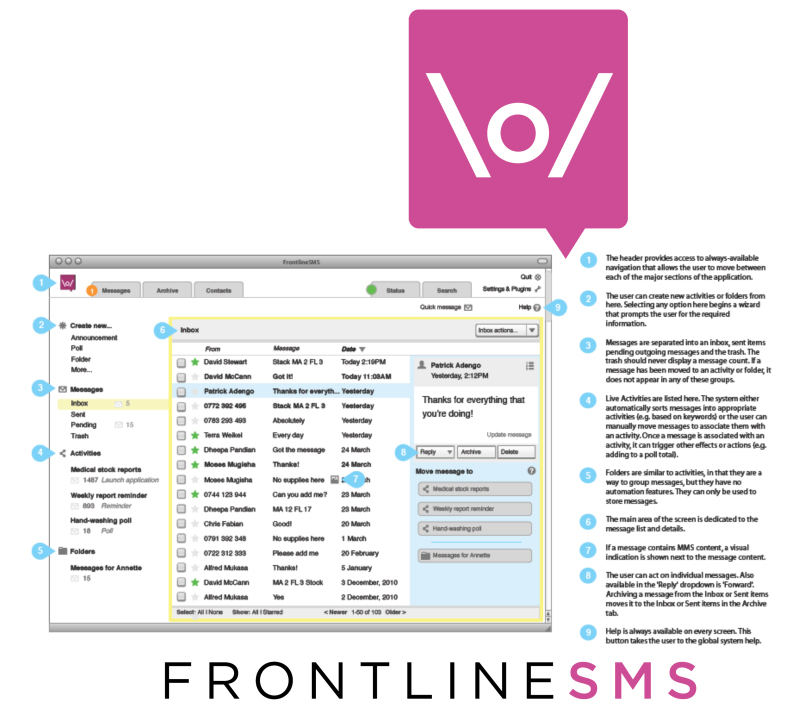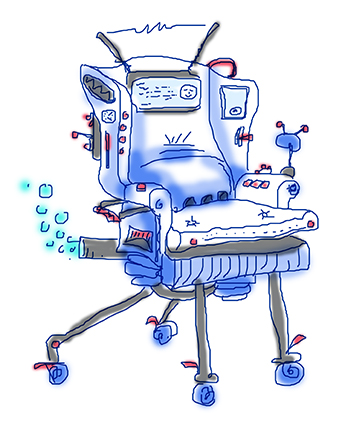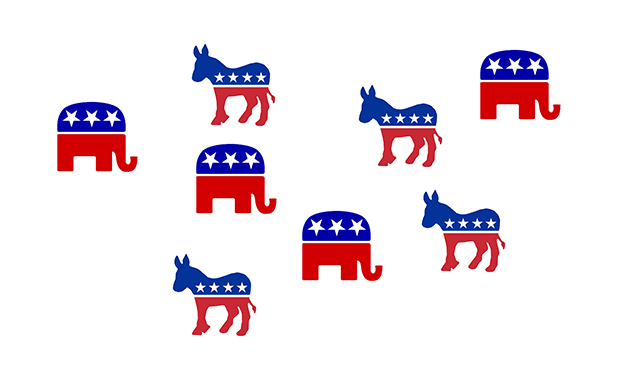McGurk Effect is synesthesia in action. The sounds you hear depend on the visual information you’re getting through your senses! This is an amazing little video demonstration. Imagine if all your senses were so interconnected — perseptual information tangled up mid stream…
Pipsqueak Articles
Posts written by Olga Werby or Christopher Werby
Pipsqueak Articles, Product Design Strategy
Special Preview: Disruptive Innovation
by Olga Werby •

Interaction-Design.org The folks from Interaction-Design.org have just completed their newest chapter: “Disruptive Innovation” by Clayton M. Christensen. This chapter is an excerpt from Dr. Christensen’s 1997 book “The Innovator’s Dilemma: When New Technologies Cause Great Firms to Fail,” published by Harvard Business Press. His newer book, “The Innovator’s DNA: Mastering the Five Skills of Disruptive Innovators,” published in 2011 on Kindle, is a follow up to the ideas in the first book and those expressed in the Interaction-Design.org chapter. Disruptive Innovation The main idea of this chapter can be summed up by Donald A. Norman’s graph (see below). This is a graph of product performance over time — think of “product” is its most expansive form. When the product is first introduced into the market, it might not be “ready for prime time”, as we say — meaning that the product is: difficult to use, or too expensive, or replacing a well-established way of doing things, or has a high learning curve: even difficult to use products can have a shallow learning curve that allows small accomplishments right away by novice users, or requires a large ecosystem of other products and services that are not widely available: think electric cars…
Conceptual Design, Pipsqueak Articles, Product Design Strategy
US Rio+2.0 Speed Geeking Session
by Olga Werby •

So I’ve learned a new word: Speed Geeking. It’s like speed dating but for geeks to quickly present their ideas to a small group. You have five minutes strict, and then move on to the next presenting geek. It was a very interesting format, but it clearly had accessibility issue: I walk with a cane and I found it very hard. It would have been impossible in a wheelchair. And others with disabilities clearly had issues with this format. But that said, I’ve learned a lot. Below are my notes on the Speed Geeking event at US Rio +2.0. Noel Dickover — Senior New Media Advisor, Office of eDiplomacy, U.S. Department of State — introduced Speed Geeking and ran the event with an iron fist! FrontlineSMS Demoed by Sean Martin McDonald, Director of Operations http://www.frontlinesms.com Main Point: SMS is cheap data that is easy to structure and moves over cell networks (without Internet) Yahoo Demoed by Gil Yehuda, Director of Open Source Product Management at Yahoo! Gil talk about the use of Flickr for journalism, human rights, and keeping people safe. He raised the issue of copyright. KIVA Demoed by Beth Kuenstler, VP of Marketing & Communications If you haven’t…
Background Knowledge, Background Knowledge Errors, Conceptual Design, Cultural Bias, Cultural Differences, Ethnographic & User Data, Pipsqueak Articles, Product Design Strategy, Users
US Rio+2.0 Breakout Session on Environmental & Conservation Education
by Olga Werby •
Below are the notes from the US Rio+2.0 conference hosted at Stanford last week. The notes are from the Education: Environment and Conservation breakout session. US Rio+2.0 Breakout Session Education: Environment and Conservation Attendees: Prof. Anthony D. Barnosky: Professor and Curator, Department of Integrative Biology at University of California Berkeley Wali Modaqiq: Deputy Director General (DDG), National Environmental Protection Agency (NEPA) of Islamic Republic of Afghanistan Dr. Khalid Naseemi: Chief of Staff & Spokes Person for National Environmental Protection Agency (NEPA) of Islamic Republic of Afghanistan Julie Noblitt: The Green Ninja — Climate-action Superhero Prof. Robert Siegel, M.D., Ph.D.: Associate Professor, Microbiology & Immunology Human Biology/African Studies at Stanford School of Humanities and Sciences Dr. Beth Stevens: Senior Vice President, Corporate Citizenship Environment and Conservation at Disney Worldwide Services, Inc. Madam Anyaa Vohiri, M.A., J.D.: Executive Director, Environmental Protection Agency of Liberia Olga Werby, Ed.D.: President, Pipsqueak Productions, LLC. Mostapha Zaher: Director General (DG), National Environmental Protection Agency (NEPA) of Islamic Republic of Afghanistan Our breakout group was partly the result of the conversation started the day before in the Environment session. Some of the members of our breakout group were present in that session as well. The main discussion…
Pipsqueak Articles, Product Design Strategy, Scaffolding, Users
Compensations and Accommodations
by Olga Werby •

Product design is a careful balance between building accommodations for different users and hoping users would compensate for aspects of design that are not well-suited to them. The power of good design is to know where this balance is located. It’s impossible to accommodate everyone. A chair that is the most comfortable sitting for one person might not work for another at all (some people are short, some are tall, some are wide, some are narrow, some have back problems…). And even a beloved chair only works for in some situations for some particular time in our lives — the rocking chair that we used to read to our kids when they were little… I talk about a chair because we can all relate: my “homework” chair, my “lucky” stool, my “lazy afternoon” stoop, my “theater” lounge, my “reading” nook, my “power” throne… It’s easy to see how my reading nook would be different from your reading divan or surfing seat. I can come up with compensations: I can add pillows or use the little knobs to adjust the hight. But the more things I have to do to make the sitting arrangement more comfortable, the less likely I’m to…
Conceptual Design, Cultural Bias, Pipsqueak Articles, Product Design Strategy, Users
The Trouble with Social Search
by Olga Werby •

There have been changes in Google search and Google analytics. There have been many discussions on this topics. But there’s one big problem that I see with adding the social dimension to search: community bias or, as we’ve been referring to it in class, cultural bias. Cultural bias is one of the sources of human errors that render problem-solving more difficult. The problem comes from having one’s views on highly charged emotional topics (or social issues) continuously reinforced by the community. I’m writing this blog on Martin Luther King Day — particularly appropriate when discussing cultural bias and the difficulties of overcoming them. In the past, when we googled something, we got results based on the relevance to our query. This relevance had little to do with us personally and focused on the topic of interest. Google results to a politically polarized question looked the same whether one was a Democrat or a Republican: It didn’t matter that Democrats tended to socialize with like-minded individuals — meaning other Democrats. And Republicans preferred other Republicans, creating segregated social circles. In each such circle, people met, talked, and reinforced each other’s beliefs. BUT the Google results were the SAME for each group,…
Attention, Attention Controls Errors, Conceptual Design, Personality, Pipsqueak Articles, Product Design Strategy, Scaffolding, Working Memory
Emotional Scaffolding
by Olga Werby •

Processing emotions takes time and energy. Part of the working memory is taken up by analyzing the emotional state of others, environmental stresses, personal feelings, and anxiety. Since working memory is an extremely limited resource, anything that takes up space there without our bidding (against our will) takes away from our ability to think through situations, to problem solve, and to make well-reasoned decisions. Instead of thinking, we are using up the working memory for processing emotions. Sometimes, emotions are just the right thing to focus on — to pay attention to. How does this painting makes me feel? Do I like this person? This music feels good… But if you are taking a math test, focusing on how much you really hate test-taking takes away from your ability to take the test. It is very common for individuals to “get” the subject matter, but fail the test. Some people are good at dealing with anxieties and some have trouble controlling their attention controls away from fretting. That’s one of the reason some educators are talking about doing away with summative assessments (final exams) in favor of continuous assessment (assessment as part of learning) — the on-going observation of students’…
